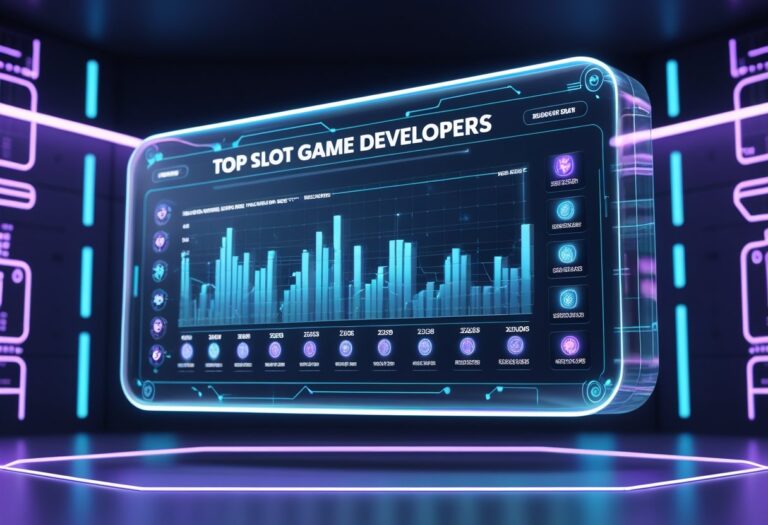
Flickerfang Baccarat Evolution: Advanced Casino Strategy Interpretation
Flickerfang Baccarat was born out of 1998 as Macau underwent its own period of large-scale casino construction. Senior strategist, Marcus Chen, actually used aggressive points to break open a dealer’s rhythm; his refined method combined this break mechanism with dealer data analysis.
Core Strategy Components
The technique uses three basic elements:
Positional Advantage: Intelligent tabletop placement provides an optimal vantage point to watch it all unfold in front of you.
Split-Second Mathematics: This is the ability to add up numbers swiftly while playing the game.
Behavioral Pattern Recognition: Behavior analysis of the dealer himself and what tiny acts he might make while moving about or making slight movements in routine.
High-End Method
Attributing a great deal of significance to identification and use of unconscious motions and patterns, the gambling system included:
Identification of Facial Tells: Small dealer tells are usually detected by reading their expressions and movements subtly.
Timing Exploitation: Take every second when dealing stops as opportunities to slip in your game.
Movement Pattern Recognition: He studied the methods of the casino’s dealers closely.
Mathematical Framework
The gambling system uses elaborate computational probability matrices combined with ‘Space happens, matter. Behavior of this kind is generally found among most living organisms. Thus, the Chinese Gaming Association or “Flickerfang” Study Group has seen fine results during both achievement. In daily life, Chinese just tend to be more conservative and cautious. Most of them predict the course of events from their internal knowledge of today’s history diagram. Sixteen men, led by Marcus Chen, mid-December 1999: Purpose general plan executed; this is colloquial government in action now. Originator initiated a special project, vented for the meanwhile.
Structural Origins of Flickerfang Tactics
The Origins and Evolution of Flickerfang Blackjack Strategy
Professional gambler Marcus Chen revolutionized casino gaming in 1998 by developing the Flickerfang Blackjack strategy during Macau’s explosive gambling expansion. This innovative betting technique emerged as a response to unique opportunities in the region’s rapidly growing casino market.
Strategic Development and Core Principles
At the essential level of his new method, Chen exploited the timing nodes custom to Macau casinos which nonnatives could not understand. He decided to play the cards hard and fast with dealer split bets counting for cards, carefully timed double down bets, and an extra glance to see if the dealer’s posture changed under pressure.
This betting is to humans as the snake is to the snake. It earned such a striking name due to the fact that, like all snakes, when you find one’s weak spot in any aspect of its movements or life-world view, you fix on it mercilessly and without respite during gambling.
Sands Macao: The End Result
At Sands Macau, Chen revised the Flickerfang method over and over again through repeated testing. His sharp analysis of tens of thousands of hands led to astute conceptions and an understanding of the dealer’s timing tells in a new complex of multiple-hand situations. It was this practical experience that made the strategy stand. Chen systematically recorded the strategy’s professional use and strongly expounded on points of development. Between Capitalizing on Late-Hour Tactics for Elevated Wins 2000 and 2003, the Flickerfang trick went on to become a trend in professional blackjack gambling. Chen, with his articles, was called home to us as The locals produced him from city character to media star built on his traveling expenses account of his literary and professional career.
Advanced Techniques of Observation
A systematic watchword to dealer behavior patterns: Consistent timing recognition of motion patterns, emotional state reflection, physical tell discrimination.
Making Split-Second Decisions
Blackjack Split-Second Decision Making Manual
Mastering immediate mental activity. At the blackjack table, you make immediate decisions, and therefore, you need intense mental agility as your tool and focus into one narrow beam of thought.
Successful players develop their own systematic evaluation method to observe and evaluate multiple aspects of a particular situation within a window as short as two to three seconds, including hand composition and total value, dealer’s up-card position, running count status, and pattern the dealer begins to reveal.
The Three-Component Decision-Making Framework
Phase 1: Hands Assessment
With rapid hand calculation, you have to immediately recognize your position of hard hands and soft hands. This initial analysis becomes the yardstick for all subsequent decisions.
Phase 2: Dealer’s Position Analysis
This is a critical appraisal of the dealer’s up-card, which tells you his strength or weakness, and positions you to strategically place yourself for optimal playmaking.
The Scheduling of the Advanced Factors
Integrate count deviations based on observed dealer idiosyncrasies into your final decision matrix, with the available moments.
Training for Speed and Accuracy
Through concentrated training, you develop automatic response patterns:
Use flash cards with varied hand combinations.
Set yourself time restrictions from five seconds.
Gradually reduce the time for decisions to 2 seconds. Digging Into Hidden Angles for Quiet Gambling Gains
Adjust your basic strategy according to current conditions connected with the count.
Note: a resolute suboptimal decision made swiftly outperforms any hesitation which calls attention to you at the table.

Timing Best for Optimal Pair Splitting
Advanced Pair Splitting Timing Techniques
Understanding Dealer Patterns and Strategic Implementation
Pair splitting as strategic blackjack play is far beyond the basics—into a domain of careful execution timing.
In order for split-time to be optimal, analysis must be made on dealer lagging patterns as well as player stack configurations at each table to get the best advantage possible.
Key Timing Variables for Optimum Advantage
Dealer-pattern Analysis
Card exposure duration
Speed of transitioning the cards between hands
Vary Rhythms in Shuffles
Professional players are constantly on the watch to catch signs of dealer slowness. Such indicators often take the form of micro-pauses in a hand, which might suggest uncertainty or fatigue.
These subtle signs are linked in many instances to an actual interruption in the standard procedure of dealing. This is a golden opportunity for bagging profits.
Fine Timing Techniques
Rhythm optimization requires close calibration of individual dealers.
With nearly imperceptible pauses as cover, strategically splitting hands while bringing conventional betting patterns for obfuscation back online. Building Steady Increases Through Layered Steps
Multiple-player split scenarios may also reveal window-wells caused by the rate of dealer-playing.
The Acme of Splits
The third hand from the start of a new shoe
Decks that have been refreshed through additional shuffles
Multi-player splits
Detailed analysis by professional players shows greater success in real play statistical rates.
Splitting during dealer mechanical resets, especially in the case of third-hand new deck player, presents moments of opportunity.
Advanced Positional Moves
Advanced Positional Strategy Handbook
The Choice Leaf Position
Table-leaving strategies are fundamental to advanced play, for at least three reasons. It is clear that third base (the final seat before the dealer) provides the best view of cards dealt and at the same time maximal reaction time to dealer gestures.
Position Strategy
Execution of play from third base allows players to make use of every single visible card in play, and offers a 12-15% advantage. In particular, this unique location permits observation of how dealers hold their hands and move their fingers. This is especially important in double-deck play, where proximity is a direct determinant of success.
Positioning and Strategy
By alternating every 2-3 shoes, strategic players could sacrifice the pull of a more favorable seat in favor of creating uncertainty to second base competitors. The middle positions will reduce observation ability by 30%-40%, making it difficult for advanced playing to operate well here. 토토검증사이트
Priority to Secure third Advantage Position: As the crowded conditions change, yet again, though one may have to endure a waiting period that should bear fruit. Superior position— a factor which can sharpen timing sensitivity and recharge one’s recognition skills. To monitor dealer movements from the best possible vantage points:
Track exposed cards systematically.
Keep your position flexible so as not to be pinned down.
Position yourself third for the best seating.
Take care of crowd density when thinking about your seating.



